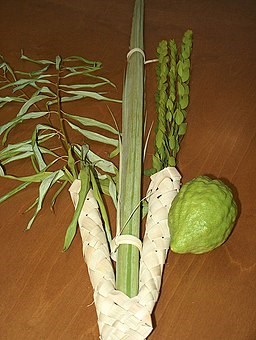Many people know about Rosh Hashana and Yom Kippur as the Jewish High Holidays. Rosh Hashana starts the new calendar year (now 5785), and Yom Kippur is the day of atonement where we individually and collectively pray for forgiveness for our sins. I say collectively because in our services we ask for forgiveness for every type of sin—each one described on its own--even if we ourselves did not commit that sin. In addition to the extensive list of sins we say by name, we also pray for forgiveness for sins that we committed knowingly and unknowingly.
We have a tradition that at Rosh Hoshana, the book of life is opened and on Yom Kippur it is closed. In this book is written the fate of each person for the coming year. However, we are able to change any harsh decree through our actions of teshuvah, tefillah, and tzedakah. These words are usually translated as repentance, prayer, and charity; however, the closer translation into English would be return to your true self, connect/unite with the divine Creator, and act with justice. (see Teshuvah, Tefillah, Tzedakah for more details).
You might think that with the High Holidays behind us we have finished our time of intense spiritual reflection. You might be surprised to learn that we were really only halfway through. Although we return to our work and earthly lives, a few days after Yom Kippur, we enter the holiday of Sukkot. You may know it as the Feast of Tabernacles. The first two days of Sukkot are times when we come together in prayer and eat meals in the Sukkah—a temporary dwelling that reminds us of the homes we lived in when we wandered the desert on our way to Israel so many years ago. (See A High Holiday Summary: Infusing Every Day with Holiness for my reflections on this time in 2014).
One of the most precious Sukkot rituals for me is having, holding, and saying a blessing with the lulav and etrog. An etrog is a special type of citrus fruit that looks a bit like a large lemon. A lulav is three plants bundled together: a date palm branch (lulav), three myrtle branches (hadassim), and two willow branches (aravot). The reason this ritual is precious for me is because it symbolized the unity of the Jewish people, and by extension all of humanity.
The plants of the lulav and etrog represent four types of people. The etrog has a smell and a taste, which represent someone who studies Torah and does mitzvot (commandments, often translated as good deeds). The lulav has a taste (the dates) but no smell, which represent someone who studies Torah but does not perform mitzvot. The myrtle has a smell but no taste, which represent someone who does mitzvot but does not study Torah. And the willow has no taste or smell, which represent the person who does not study Torah or do mitzvot.
How does the lulav and etrog symbolize unity? We bundle them together and thank G-d for this mitzvah that shows us we are all one people. In order to grow and thrive as individuals who are able to help humanity and the world we all live in, we need to come together with our strengths, talents, challenges, and differences. We need to learn from each other, to take the best that each of us has to offer and share it with those around us so we can elevate this world that we all live in.
May we all know nothing but simchas (joyous events) from now on.
Fiona Prince, MA is a coach and teacher who provides fundamental communication and writing skills through her own company and through Royal Roads Professional & Continuing Studies. She is the Jewish Spiritual Care Provider at UVic. In that role, she welcomes questions from students and the community at large. Fiona acknowledges that her home and office are located on the traditional territories of the W̱SÁNEĆ and Lkwungen-speaking peoples, on whose traditional territories, she is thankful to live, learn, and work. She worships at the Chabad Family Shul in Victoria and volunteers by teaching children and adults how to read Hebrew.
You can read more articles on our interfaith blog, Spiritually Speaking at https://www.timescolonist.com/blogs/spiritually-speaking



